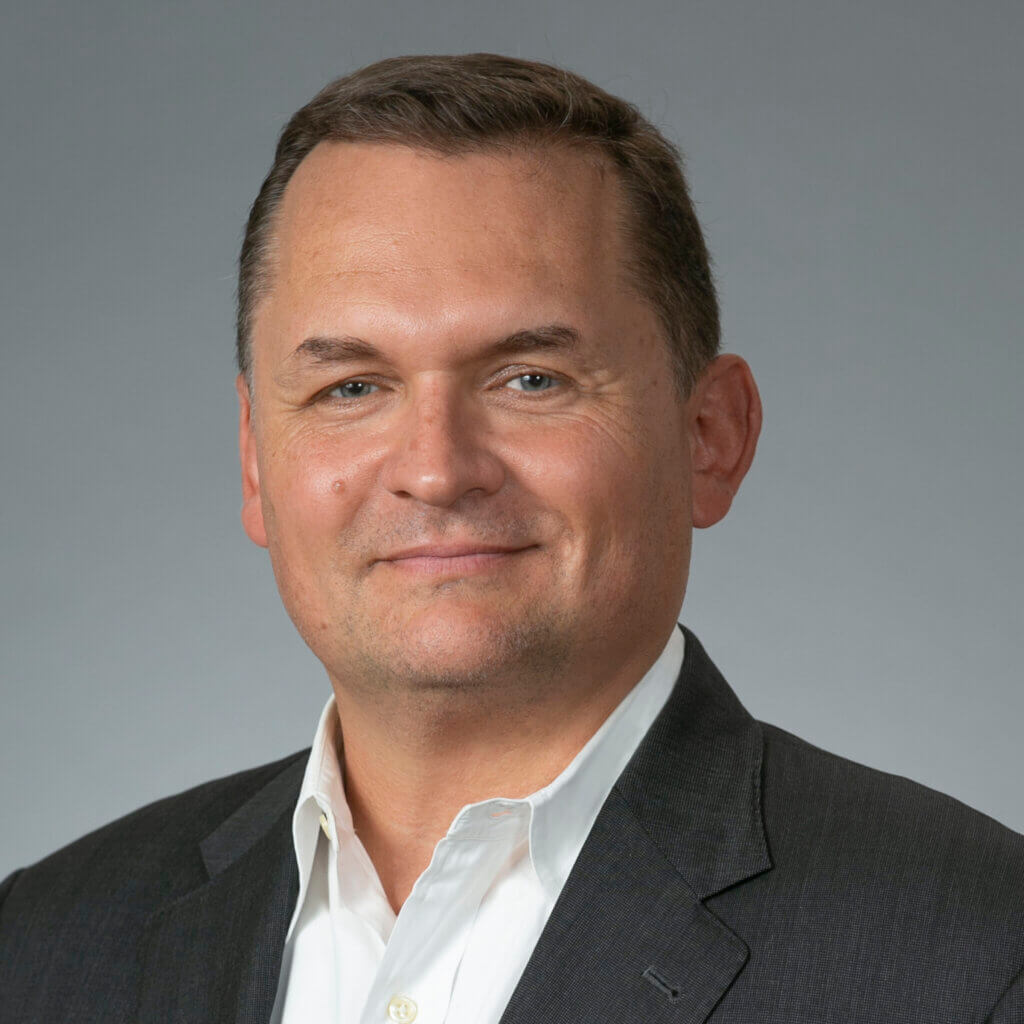
Keynote interview
Fit for the future
Michael Janiszewski shared his insights in December’s PEI Perspectives report about what tools, technologies and support GPs and LPs will need to set them up for 2025.

Interview
How important is a manager’s operating model to its fundraising success in today’s market? To what extent has this changed and why?
Private markets assets under management have more than trebled to $14.5 trillion over the past decade, according to analysis by Bain & Co. In a climate of increased competition, LPs are placing a growing emphasis on private markets firms’ operating models.
This is in part because LPs have substantially larger pools of capital invested in private markets today. As a result of these larger exposures, they are leaning towards managers with robust operating models in order to limit the downside risk.
At the same time, managers with best-in-class operating infrastructure are better positioned to collect, analyze and harness data to improve deal origination, execution and portfolio company performance. Of course, dealmaking will always remain the core priority for managers, but GPs have come to realize that back-office capabilities and operating models can contribute to front-office success and play an important role in supporting future fundraising.
What areas are LPs scrutinizing in particular? What are the must haves and the red flags for investors doing their due diligence on operating models prior to committing to a fund?
Investors are certainly demanding more when it comes to reporting, compliance and technology. Having the right bespoke operating model in place puts GPs in a better position to differentiate their firms through speedier, more detailed, value-add reporting to investors. In addition, LPs are looking to interact with their GPs in a more digital and data-driven manner, gaining access to information about investments in new and deeper ways.
As well as supporting fundraising, how else can fit-for-purpose, future-proofed back-office infrastructure support front-office activities?
A rigorous back-office capability is essential for GPs who want to offer more co-investment opportunities, take advantage of the liquidity offered through NAV financing, or are considering GP led deals that require solid accounting and reporting frameworks. These are all inherently data-driven activities, which means that the way in which they will ultimately be delivered will be through the use of technology.
What role is technology playing in supporting the modern private equity operating model more generally, and what opportunities does this present?
Technology is undoubtedly playing an ever more important role across the private equity industry. This initially played out in the back office, with various types of financial statement reporting, cash management solutions, as well as workflow and case management tools coming to the fore. Then, in the middle office, we started to see a focus on fund performance and portfolio monitoring, with information being collected across asset classes to support risk management and sophisticated reporting.
Finally, in the front office, technology is now being used to support investment and diligence processes, as well as investor relations. What I think is particularly new and exciting is the proliferation of specialist private markets tools that we are able to leverage today. This is in complete contrast to what was available a decade ago.
It used to be that if an alternatives manager was looking at an aircraft lease, for example, we would have to adapt that into the fund accounting system in the form of some sort of bond. That is no longer the case. Technology now has the language of alternative investing built into it, enabling us to provide different views on risk, better access to data to support superior decision making, and allowing LPs to actively monitor their investments.
The other area where we are seeing significant changes, and where development is primarily driven by LPs, is an enhanced digital experience. It’s still early days, but we are seeing generative AI being used to answer client queries, to leverage large knowledge bases and to respond to requests for proposals. Then, from an operational perspective, optical character recognition is being widely used to make tasks that were historically manual more automated.
Looking ahead, I cannot think of a single operational function where we won’t be using some sort of AI to either extract or manage information differently, or to start drawing conclusions based on that information to support reporting or decision-making, at some point in time.
However, the focus should not just be on AI, but automated machine learning as a whole the process of taking upstream and downstream data and standardising it – given the sheer volumes of financial documents that come into play.
To what extent is artificial intelligence being integrated into digital solutions?
Technology is being used to create great UI, visualization and mobile access, for example. A wide variety of digital interactions – from something as simple as getting a K-1 in the US to performance analysis, cashflow fore[1]casting and benchmarking – have all become, if not the norm, then certainly the expectation for investors. Alternatives have become a much more digital and data-driven industry.
Is the rapid adoption of technology also creating challenges?
I would say the biggest challenge for managers involves data management. While we have made great strides in systems that speak the language of alternatives, we are nonetheless faced with significantly increased demands from clients – both GPs and LPs – when it comes to managing that data. Of course, the cloud has helped us a great deal in that regard, but there is still a lot of hard work involved in operationalizing data that has historically been manually inputted into spreadsheets. Finding ways to ensure that data can be accessed and analyzed in sophisticated ways is something that will certainly be enabled by technology, but there is still some way to go.
The service that an administrator provides reflects directly on the manager. It is a reputational issue for GPs, and therefore for LPs too. LPs are looking to interact with their GPs in a more digital and data-driven manner.
How are all of these developments impacting the decisions that managers are making around what to outsource and what to keep inhouse, and how are third-party providers responding?
Rather than investing large amounts of capital into ever-expanding back-office teams and technology, managers are increasingly working with third-party administrators in order to benefit from the scale, cost advantages and specialized back-office focus. This enables managers to instead invest capex into their core business of dealmaking. In response, fund administrators are evolving their offering from the provision of basic outsourced fund accounting services to providing technology best practices, together with support for managers to enable effective implementation and harness technology in modular operational models.
What is particularly exciting for us is that we are receiving a lot of inbound interest regarding solutions to many of the challenges that I have described. Those enquiries sometimes center on the use of data to support better investment decision-making, for example, or the need to provide different types of information to end clients.
The focus can also be on improving the manager’s cost profile. In short, managers are looking to third parties to fulfil functions that they either can’t or don’t want to invest in at the level that an external provider can. Another driver, meanwhile, is the desire from managers to partner with organizations that are able to glean insight and experience from working with market participants across the entire industry.
As a result, third-party administrators are being approached not only as outsourced service providers but as accelerators for the strategies that their clients are trying to implement.
Is the choice simply between insourcing and outsourcing, or are other models emerging?
Co-sourcing is certainly a trend. That is something that managers are talking to us about and it is something that we have the flexibility to implement. However, I would add that most of those conversations are followed by questions about what our plans are as a third-party administrator to provide some of those functions in a fully out[1]sourced manner.
Co-sourcing is typically seen as a step on the journey towards outsourcing.
What questions should LPs be asking of a potential outsourced provider?
Operational excellence is, of course, incredibly important in this space, because the service that an administrator provides reflects directly on the manager. It is a reputational issue for GPs, and therefore for LPs too. Other sources of differentiation among third-party providers include the degree to which these organizations are investing in their own core systems and operations in order to take advantage of industry trends. GPs should also select an expert partner with firsthand experience in managing processes across multiple strategies and different investment vehicles.
An understanding of cross-jurisdictional knowledge is also vital, should they wish to expand investment beyond their regional boundaries. In addition, LPs should consider the extent to which administrators are investing ahead of the curve, thinking about the next wave of innovation, whether that be generative AI, sophisticated data management or the provision of different ways for LPs to access information.
That kind of forward-thinking approach can help put managers on the front foot when fund[1]raising, and give LPs the comfort that operations are being well run by experienced industry specialists, and that it can scale as their firm grows.
What is your number one piece of advice for a manager re-evaluating its existing operating model with the intention of building something that is sustainable and that will allow it to scale?
My number one piece of advice would be to take time to review the market. I would add that it is also important to understand that the role of the fund administrator has changed.
Today, the right outsourced partner can provide operational support from back-office accounting, all the way through to client services, thereby enabling firms to focus on their own value proposition in a very different and much more sophisticated way.
Conference
CLO Summit 2024
The team is heading to Dana Point, CA for Opal’s CLO Summit! We always look forward to this event, it’s an industry highlight.
This leading event provides the most up-to-date information for maximizing returns and deducting risks in the rapidly changing asset field. Get in touch if you’re there!
Key contacts

Lora Peloquin
United States
Managing Director, Sales, North America

Randall Reider
North America
Managing Director, Sales, North America

Tim Ruxton
United States
Managing Director, Sales, North America
More events








Analysis
Acing loan agency: What to look for in an administrative loan agent
As private debt managers’ operations grow in complexity, outsourcing more of the administration burden to a loan agent offers the opportunity to streamline middle office duties.

Private debt has encountered explosive growth as an asset class in recent years. The industry started out 2024 with $1.5 trillion in assets under management, up from $1 trillion in 2022, according to Morgan Stanley.
As direct lenders and broadly syndicated loan managers seek to grow their funds and returns alongside this industry growth and investor demand, the burden of their fund operations can begin to have an effect on their success.
This is especially the case with loan agency operations, known for their intense level of work across complex credit investments at high quantities.
Under these industry conditions, using a loan agent becomes much more appealing for many managers, and firms who already depend on a third-party loan agent may look to increase their outsourcing or select a new provider that more closely meets their needs.
To understand more about loan agency and how a good loan agent operates, read on.
What is a loan agent?
In the credit and private debt space, a loan agent is the party that facilitates all ongoing operations required to adhere to the loan terms and liaises between the lenders and counterparties to do so. Tasks that are central to loan agency include:
- Calculating a loan’s interest over time
- Coordinating loan and interest payments between multiple lenders and counterparties
- Sending loan communications between lenders and counterparties
- Engaging outside parties like lawyers or fund administrators to move along loan operations
There are a few different kinds of loan agents depending on a lender’s needs or depending on the nature of the loan:
Administrative agent
A lead administrative agent, or a named agent, fully represents the lender on the loan and is named in documents as the administrative agent. By taking this lead administrative agent role, the partner takes over all loan agent responsibilities from the lender.
Sub agent
The sub agent role exists for lenders who want to take the lead role in the loan agency process and be listed as the lead agent on their own deals. For the behind-the-scenes responsibilities that they hope to outsource, they would work with a sub agent who is not named on the loan but handles elements such as payment distribution and managing interest rates.
Successor agent
A successor agent steps in when the administrative agent resigns or is replaced, a situation that frequently arises in restructuring scenarios and liability management exercises (LMEs). This change can disrupt the smooth administration of a credit facility and potentially delay the LME or restructuring process. Acting as a neutral third party, the successor agent ensures a seamless transition, aligning the goals of all involved parties and facilitating a the swift progression of the constituents’ objectives and desired outcomes. At Alter Domus, we’ve served as successor agent on many high-profile LME and restructuring deals such as Amsurg, Apex Tool, Boardriders, Brightspeed, Revlon, Trinseo, and Wheel Pros, among many others.
What to look for in a loan agent
While lenders can insource loan agency responsibilities, many choose to outsource some or all of this imperative, labor-intensive fund operation. By outsourcing these responsibilities to a loan agent, lenders benefit from tighter headcount in their operational teams and the close attention and expertise of teams specifically focused on all aspects of the loan agency process.
But not all loan agents are created equal. Loan agency involves painstaking and bespoke work to carry out the terms of a loan over the multiple years of its life. When evaluating partners to serve as a loan agent, here are some key elements to help decide if they’re up for the task:
- A balance of bespoke expertise and ability to scale operations
As the direct lending and BSL spaces grow and managers hone their strategies along with that growth, more complex loan terms and transactions emerge. It’s encouraging to see our industry mature in this way, but it does make for more complex fund operations, particularly on the loan agency side.
For a loan agent to work effectively, they need to have direct and deep expertise in these bespoke strategies and debt vehicles. At Alter Domus, we pride ourselves in operating at the intersection of bespoke expertise and high volume. Our servicing teams are segmented out by asset class expertise and work cohesively for an end-to-end approach, as opposed to the siloed operations of our competitors. We have the experience and the team size to achieve the balance needed for fickle loan agency challenges.
- Technology-enabled service
Loan agency services may take plenty of time, attention, and expertise from your provider, but it’s also crucial that your provider has capable technology underpinning their loan agent duties. When a provider relies too much on manual processes in administering loan agency, their lender client absorbs the high risk of error.
At Alter Domus our loan agency teams rely on our proprietary software platform Agency360 to service our direct lender and BSL clients. There are key benefits to relying on a proprietary tool for these needs. These loan services benefit from key advantages of using a proprietary tool – for example, we control the updates and maintenance of the tool ourselves rather than relying on software from a third party. We also avoid having to pass along rising fees from a third-party platform.
A reliance on powerful technology should also extend to the client experience. When outsourcing loan agency operations, lenders should still have a view into the service they’re receiving and a 24/7 ability to access their loan data and reporting. A third-party loan agent should offer a tech-enabled and convenient way to check in on their operations and download relevant reporting.
At Alter Domus, we offer Agency CorPro as a home base for our clients. The proprietary portal platform serves as our purpose-built solution to exchange sensitive asset information and important loan documentation between our teams. That means our work is available to you at all times in a self-service fashion.
- Breadth of loan agency and other middle and back-office service capabilities
An ideal loan agent should offer additional services throughout the loan lifecycle to support your operations. By placing multiple outsourced needs with the same firm, your teams can benefit from a more holistic data and technology experience.
At Alter Domus, we’re experts in private debt and BSL, and cover the full range of credit middle office services for these asset classes, from loan servicing to fund administration to borrowing base administration. We know that every operational model is different at each firm, and we are able to customize our services and delivery model to any setup your firm prefers, including outsourcing, co-sourcing and managed service models.
Optimize your loan agency operations with Alter Domus Agency Services
As a top provider in the market, Alter Domus’ Agency Services offering meets all these needs and more. Our servicing teams are trained specifically in bespoke credit vehicles and are large and experienced enough to handle high volumes of loans. In fact, our peak seasons see us processing more than 100,000 payments in a single day.
Ready to see what Alter Domus can do for your loan agency needs and beyond? Learn more about Alter Domus’ Agency Services here. To speak with our Agency Services team about how our services can help your middle- and back-office operations, contact us here.
More events
No related content found.
Analysis
Infographic: Private debt’s renaissance by the numbers
The private debt industry has enjoyed impressive growth over the past few years. See how Alter Domus’ loan agency environment reflects the driving forces behind private debt’s journey to the forefront.

Private debt has come into its own and showed its resilience over the last four turbulent years of economic recovery and geopolitical conflict affecting the alternative assets space.
Globally, credit assets under management took off to new heights while other assets like private equity, venture capital, and real estate fought through startling slowdowns.
Since 2020, Alter Domus’ Agency Services has serviced new origination of over $750 billion, across over 2,500 loans. As a representation of the greater private debt industry, we cover five key trends that zoom in on certain driving factors of private debt’s growth.
Download our infographic below to see these trends represented or learn more from our loan agency experts at our Agency Services page.
More events
No related content found.
Analysis
The credit middle office: navigating complexity in a competitive market
Rising competition and the evolution of more complex credit strategies has obliged credit managers and lenders to sharpen their focus on middle office infrastructure capability.

Credit markets have changed profoundly since the 2008 fiscal crisis, with broadly syndicated loans (BSLs) and private credit replacing bank lending as primary sources of debt for corporate and private equity.
As banks tapped down lending activity in the aftermath of the 2008 credit crunch to focus on repairing balance sheets, BSL markets and successively private credit managers stepped in to fill the gap and have not looked back.
According to Preqin figures private debt assets under management (AUM) have increased more than four-fold during the last decade, and currently sit at approximately US$1.6 trillion. Leveraged loan markets in the US and Europe, meanwhile, have seen loan issuance more than double since 2015 to exceed US$1 trillion in the first half of 2024, according to figures compiled by law firm White & Case.
As private credit and BSL markets have grown, so has competition, and to differentiate their propositions, lenders and private credit investors have adopted more sophisticated and complex credit strategies.
Previously private credit and BSL would focus on servicing different borrower groups, but as strategies have evolved, head-to-head competition for the same deal opportunities has intensified. Pitchbook figures, for example, show that US companies refinanced more than US$13 billion of private debt in the BSL market during the first four months of 2024, a 180-degree flip from the second half of 2023, when most borrowers were refinancing BSL borrowings with private debt.
Market evolution drives middle office transformation
As competition across credit markets has ramped up, lenders have had to reappraise their middle office operational and technology infrastructure and ensure that the administration of the individual credits in their portfolios is efficient, accurate, and as frictionless as possible for borrowers and other key stakeholders.
In a crowded market, where borrowers have a wide pool of lenders to choose from, a reputation for best-in-class middle office service – including tasks such as loan accounting, loan agency, trade settlements, interest rate payments, borrower and lender communications and borrowing bases – can serve as a point of differentiation for companies and sponsors when selecting a credit partner.
The last 24 months of dislocation across credit markets have served to further emphasize just how valuable and important middle office capability has become for credit managers.
As interest rates have climbed, so have the costs of floating rate debt structures, which have added to the workloads of credit middle offices, which have in turn had to keep track of agency notices, rate resets and margin changes. Covenant compliance and loan amendment negotiations have also increased in volume as financing costs have climbed, directing further demands into middle office in-trays.
Managers and lenders that had been able to get through with lean middle office operations in bull-markets have had to reengineer middle office operations to keep up with the higher volumes of increasingly complex and important loan administration workloads.
Middle office support
Instead of hiring in much larger middle office teams and locking up cash in capital expenditure to keep pace with rising middle office workloads, credit providers can take advantage of the technical and technological expertise of an outsourcing partner to put in place a middle office model that is flexible and scalable.
Alter Domus, for example, has supported credit provider clients with comprehensive loan servicing and monitoring support for more than two decades, and has built up the specialized expertise and technology stack to cover the ever-intensifying technological and operational asks of middle-office credit teams.
All aspects of loan servicing needs can be handled by Alter Domus across our middle office service offerings:
- Our Loan Agency offerings via our Agency Services team allows us to serve in a variety of agency roles including named administrative agent, sub agent, successor agent, and more. In doing so, our teams handle jobs including counterparty communication, oversight of covenant compliance, and agency notices.
- Our Loan Services offerings provide an array of coverage including loan accounting, loan servicing, trade settlements, and CLO services. This includes support for key structural elements such as the CLO overcollateralization test. Our teams are perfectly positioned to take care of complex, time-consuming day-to-day workflows that are essential to the life of a loan.
- Our Loan Monitoring solutions provide digitized, normalized financial information from borrowers delivered to your monitoring solution of choice or our modern portal.
Our middle office servicing relies heavily on our proprietary administration platforms CorTrade, Agency360, Solvas, and VBO to support clients across a broad suite of accounting, modelling, and credit risk solutions. Alter Domus’ tech platform covers all these tasks, and others, with an interface that can operate within a client’s portfolio management system and process a wide range of reporting, data, and internal accounting functions.
When reviewing middle office infrastructure capability, it is also crucial for managers to ensure that the middle office links in to both the front and back office, and that teams in these three functions are not operating in siloes.
Each team will often use different systems, technology platforms and servicing teams to execute their core functions, but it is important that all functions are integrated, and that there is a secure, accurate data trail that can be traced from the beginning to the end of the loan lifecycle.
Our firm has leveraged our credit and technology expertise to help several credit providers build data bridges between the technology and software used in separate functions, and integrate data from preferred front-office, middle-office, and back-office platforms to ensure data veracity.
Working with a partner like Alter Domus enables credit providers to focus on their core business of originating opportunities, assessing risk, and underwriting new financings, confident in the knowledge that they have the middle office support in place to manage loan servicing tasks to the highest industry standards.
More events
No related content found.
Analysis
How private debt managers can scale their success by optimizing their operational models
The private debt industry has experienced significant growth during the last decade and has delivered impressive performance throughout the rising interest rate cycle. With forecasts pointing to further increases in private debt assets under management (AUM) in the years ahead, private debt managers will have to upgrade their operational infrastructure to support their rapidly-expanding franchises and better connect front, mid, and back-office functions.

In what has been a challenging period for alternative investment managers, the private debt asset class has been a standout performer.
According to McKinsey, private debt generated stronger returns than all other private market asset classes in 2023 and was the most resilient for fundraising.
Rising interest rates benefited private debt firms, due to the floating rate structures that gains when base rates climb. This has driven ongoing investor demand for the strategy, proving its ability to deliver attractive risk-adjusted returns across the investment cycle.
The robust performance of private debt strategies through the recent period of market dislocation and uncertainty follows a period of remarkable growth for the asset class.
Private debt assets under management (AUM) have more than quadrupled during the last decade, according to Preqin figures, and currently stand at approximately US$1.6 trillion. And according to BlackRock, the private debt industry is well-positioned to sustain its growth trajectory. AUM forecast is set to reach US$3.5 trillion by the end of 2028 as borrowers continue to favor the bespoke and flexible financing structures offered by private debt managers, and investors, many of which are under-allocated to private debt, move to grow their exposure to the asset class.
Preparing for the next cycle of expansion
For private debt managers, the rapid increase in industry AUM has brought their franchises to an organizational tipping point.
Private debt firms are not only managing larger pools of capital for a more diverse, demanding investor base, but are also executing increasingly complex investment strategies that have expanded beyond bilateral, middle-market loans into big-ticket club deals and opportunistic purchases of debt tranches.
Unlocking capital from a global investor base and expanding deal pipelines into new areas have opened exciting opportunities for managers. However, capitalizing on these prospects will require private debt firms to upgrade their operational infrastructure to sustain their growth.
Managers have not only had to enhance their back-office fund accounting and investor reporting functions to serve an increasingly demanding and sophisticated investor base, but also their middle-office loan servicing and loan administration services to borrowers and the companies to which they lend.
The lean operations that supported private debt through its first phase of expansion will have to be upscaled to ensure that managers can maintain operational nimbleness, and the ability to measure performance while tracking risk, as transaction volumes rise.
Increasing middle and back-office capabilities do pose operational challenges for managers. Staff and technology costs ramp up, while the impacts of additional processes, sign-offs and internal bureaucracy can compromise the agility and responsiveness that have underpinned previous success and growth.
It has also become crucial for managers to establish seamless links between front-office dealmakers, middle-office, and client-facing teams that support borrowers, and back-office teams managing fund accounting and reporting.
Key areas for consideration
As private debt managers enter the next phase of the asset class’s evolution, there are three key questions that should be asked before embarking on an operational overhaul:
- Does integration exist through the front, middle, and back office?
While the oversight and investment management of a private debt fund does have similarities with other alternative asset classes such as private equity and real assets, there are specific deal structuring and fund accounting requirements that are unique to private debt.
Loan structures, for example, will include multiple tranches, varying rates and payments of principals and interest. Managers must also be able to source and analyze data in markets where public information is less available than in syndicated loan and bond markets.
The fund accounting required to track and report on private credit portfolios and investments is also vastly different from what is required in private equity portfolios, for example.
As managers expand, it is essential that their accounting and operating teams have the requisite experience to handle the specific demands of private debt fund accounting and reporting.
It is equally important for private debt managers to have the middle-office capabilities to take loan agency responsibilities, such as for individual investments, handle all trade settlements and interest rate payments, and to administer borrowing bases.
- Outsourcing or in-house?
Managers must decide if it is best to outsource both back- and middle-office functions as their operations grow or invest in building additional infrastructure in-house.
Keeping operations in-house gives managers direct control of loan operations, fund accounting, and data, which has its advantages, but does come with high upfront costs and makes it more difficult to scale up back-office resources in the future.
Outsourcing to a third-party provider allows managers to benefit from the global reach and extensive industry expertise of fund administration specialists. It is also important to factor in that when a manager ramps up the size of internal teams, the GP bears those costs. In contrast, when outsourcing, the costs of administration are covered by the fund.
If managers do choose to go down the outsourcing route, it is crucial to have clarity on what infrastructure and technology will have to be retained internally to oversee, engage, and interact with a third-party fund administrator.
Managers must also be clear on the scope of work that a loan servicer and fund administrator can handle. Not all partner firms, for example, can deliver portfolio accounting via their loan administration systems.
Managers should be clear on exactly what support they require and whether the administrator can meet that request.
- How will data challenges be addressed?
Data management poses distinctive challenges in a private debt context, as different teams within a firm have different technology and data requirements.
Investor relations teams, for example, want to access performance data to report to LPs, while operations teams prioritize the data requirements of investment professionals and fund accountants want to ensure that books are up to date.
This has seen the asset class move away from single systems, which aim to cover the full loan cycle and serve as a “single source of truth,” to a model where there is an interlinking patchwork of technology platforms and servicing teams.
As data linkages between different operations and teams grow in importance, the middle and back office must become more fluid and integrated.
Ensuring that the data linkages between these teams and their respective technology tools are fully integrated and seamless is complex and impacts how back-office and mid-office functions are structured.
Whether outsourcing or keeping operations in-house, firms must ensure that operating models are structured in a way that aligns the back office and middle office teams and helps to facilitate the “front-to-back” integration required to support multiple complex front office investment management tasks.
Curating an operating infrastructure that covers these priorities and meets the specific demands of each individual private debt manager lays a firm foundation for building a scalable operational model that can grow with a private debt platform.
The value of a supportive loan servicing and fund administration partner
Transforming an operating model is demanding and can distract managers from their core front office investment management priorities.
Working with an experienced servicing partner and tech provider like Alter Domus, which has extensive asset class experience, a clear understanding of how private debt managers work, and insight into the key operational priorities they are seeking to address as their organizations grow, eases implementation and ensures that managers are putting the right structures in place.
We have the resources and expertise to help private debt managers take their operating models to the next level by streamlining processes and harnessing technology, and have supported clients’ operational requirements in the following ways:
- Provision of a full suite of services
Alter Domus provides an end-to-end service to private debt managers that covers every operational requirement, including loan administration, portfolio accounting, loan agency, loan servicing, and fund administration, as well as full data integration across these functions.
- Technology expertise
Alter Domus has successfully implemented proprietary technology to support all its services. Alter Domus’s Solvas platform, for example, integrates accounting, modelling, and credit risk solutions to serve as our proprietary loan administration system.
This means Alter Domus can integrate data and operate within a client’s portfolio management system, providing regular reporting and data feeds that allow clients to update their internal accounting systems.
- Data integration
Alter Domus’s technology expertise means it can also support private debt managers with the design of technology stacks and operating models that support data integration.
We can help clients to connect the various preferred technology tools of their teams and facilitate the fluid movement of accurate data between different teams and across different technology platforms. This ensures that there is a golden copy of all data throughout the full loan and fund lifecycle.
Partnering with a firm like Alter Domus can help private debt managers to re-energize their focus on strategic growth and ensure that their support structures are agile and fit for purpose in a private debt asset class that continues to grow, develop, and become more competitive.
Key contacts

Greg Myers
United States
Global Sector Head, Debt Capital Markets
More events
No related content found.
Conference
ABS EAST 2024
| We can’t wait for this year’s ABS East conference in Miami! Look out for our team and stop by our booth #47! Tim Ruxton will be moderating the panel, North America vs the world: cross-border opportunities. We look forward to connecting and engaging in the latest industry topics of structured finance. See you in Miami! |
Key contacts

Tom Gandolfo
United States
Head of Sales & Relationship Management North America
More events
No related content found.
Conference
ALTSSG
| Jamie Loke will be at MarketsGroup ALTSSG in Singapore on October 10th. This one-day event covers all topics private equity, including venture capital, AI, hedge funds, and more. She is excited to compare experiences of the difference between the Asian Private Credit Markets and the US and Europe. Get in touch if you’re there! |
Key contacts

Jamie Loke
Singapore
Head of Sales and Relationship Management, SEA
More events
No related content found.
Conference
9th Annual LPGP Connect Private Debt Chicago
David Traverso will be attending the LPGP Connect 9th Annual Private Debt Conference in Chicago. The event is set to bring together private equity practitioners for a day of knowledge-sharing and thoughtful conversation. He is looking forward to connecting with LPs and GPs to learn the latest. Get in touch if you are there!
Key contacts

David Traverso
North America
Managing Director, Sales at Alter Domus North America
More events
No related content found.
Conference
European CLO Summit 2024
| Juliana Ritchie, Tim Ruxton, Amit Varma, and Steve Baxter are going to Opal’s European CLO Summit in London, this October 8th! The conference is a hub for everyone involved in private debt and a great way to meet and explore connections and latest techniques to maximize asset returns for clients. |
Key contacts

Juliana Ritchie
United Kingdom
Head of Sales & Relationship Management, Debt Capital Markets, Europe

Tim Ruxton
United States
Managing Director, Sales, North America
More events
No related content found.







